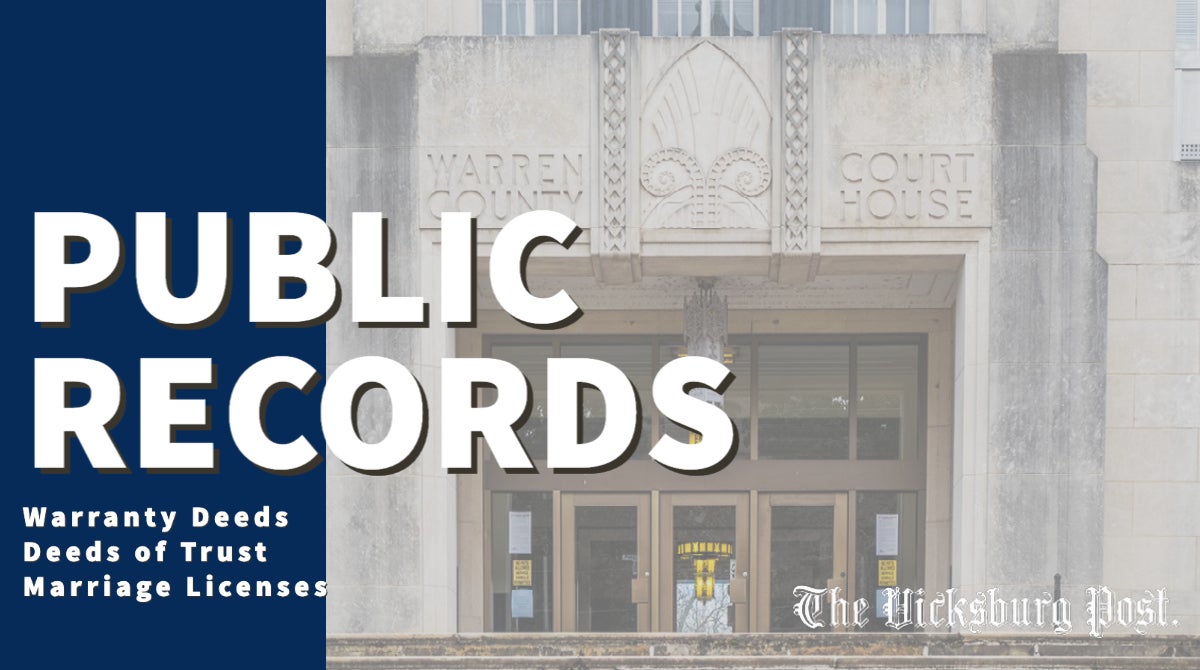Historical markers to be unveiled in downtown Vicksburg on Friday
Published 4:15 pm Monday, March 6, 2023
The Mississippi Department of Archives and History (MDAH), City of Vicksburg and Vicksburg Convention and Visitors Bureau (VCVB) will unveil two new historic markers in downtown Vicksburg on First East and Adams Streets on Friday.
The markers will highlight the town’s founding and earliest residential and commercial area and were paid for by the City of Vicksburg and VCVB and approved by MDAH. They are titled “Newitt Vick’s Original Vicksburg” and “Main Street Historic District and Amendment Area.”
“In dedicating these markers, we’re acknowledging our town’s rich history and, in a way, reflecting on how far we’ve come,” said Vicksburg Mayor George Flaggs Jr. “People travel from all over the world to tour and experience Vicksburg, and these markers will help us continue telling our unique story long after all of us are here.”
The new markers are strategically located along one of five existing Heritage Trail Walking Routes, a product of the past local partnership with the National Park Service’s Lower Delta Initiative intended to showcase the history of Vicksburg.
“These new markers are a welcomed addition that will provide visitors with an added level of historical context as they tour our beautiful city,” said VCVB Executive Director Laura Beth Strickland. “On average, our Heritage Trail Walking Routes draw thousands of visitors a year. It’s always a great day when we’re able to partner with the City to make investments like these.”
One of the new markers reads, “Rev. Newitt Vick came to this area, then known as Walnut Hills, in 1812, having purchased land from the U.S. government. He laid out the town of Vicksburg in the area bounded by First East Street, First North Street, South Street and the Mississippi River.
After Vick’s death from yellow fever in 1819, the town was divided into lots by his son-in-law, the Rev. John Lane, and incorporated in 1825. The Main Street National Register Historic District includes what is considered Vicksburg’s earliest commercial and residential area.
The Main Street National Register Historic District was listed on the National Register of Historic Places by the United States Department of the Interior in the late 1970s and includes the earliest residential and commercial area in the city.
It is architecturally significant for its concentration of well-preserved Greek Revival residences and 19th and 20th-century commercial and public buildings, including Christ Episcopal Church, the oldest church and probably the oldest public building existing in Vicksburg. Amenities such as cast-iron fences and brick-paved streets contribute to the 19th-century character of the district.
Many prominent citizens of this early period built residences in or near the area included in the Main Street Historic District. Among the residences existent in the district are those of two lawyers, William S. Bodley, who became a circuit judge in 1837, and William A. Lake, who was elected state senator in 1848 and later U.S. Congressman in 1855. The Duff Green House, owned by the wealthy merchant who was the son-in-law of Congressman Lake, served as a hospital during the Civil War.
This area was considered a “central and most eligible residential location” until 1876, when as a result of flooding the Mississippi River changed course and left the central portion of the city without a port for a brief time. In keeping with the tendency of the city to follow the river, the once-fashionable area became the northern limits of the city and somewhat less desirable as a residential location.
As a commercial center, the area continued to thrive, possibly because of the fact that even after the river changed course, Openwood Street remained the main thoroughfare leading East to Jackson and the state capital forty miles away.
Openwood Street leads to, and derives its name from, Open Woods, the home and burial place of Newitt Vick, and is the only diagonal street in Vicksburg. Buildings constructed at the point where Openwood Street intersects Locust and Main streets are uniquely designed to accommodate the peculiar angles of the streets.
These slanted fronts and canted corners create an intimate grouping around a triangular open space found nowhere else in Vicksburg.
In the late, 1980s, the Main Street Historic District was amended to include areas to the West and North of the original boundaries due to being architecturally significant as a cohesive neighborhood, and for its concentration of well-preserved Greek Revival residences and 19th and early 20th century commercial and public buildings which show the evolution of residential architectural styles.
Included in the expanded areas of the district are lower-income residences as well as upper-income residences and intact examples of some of the most popular architectural styles built in Vicksburg.
Also included in the area are area are several two-story Greek Revival residences that date from the 1830s and 1840s. One of these, Anchuca, is listed on the National Register of Historic Places and served as a Civil War hospital following the war and was home to Joseph Emory Davis, the elder brother of Jefferson Davis.
While visiting his brother in 1869, Jefferson Davis spoke to friends and neighbors from Anchuca’s front balcony, marking this site as one of the last public addresses to the people of Vicksburg by Davis.






